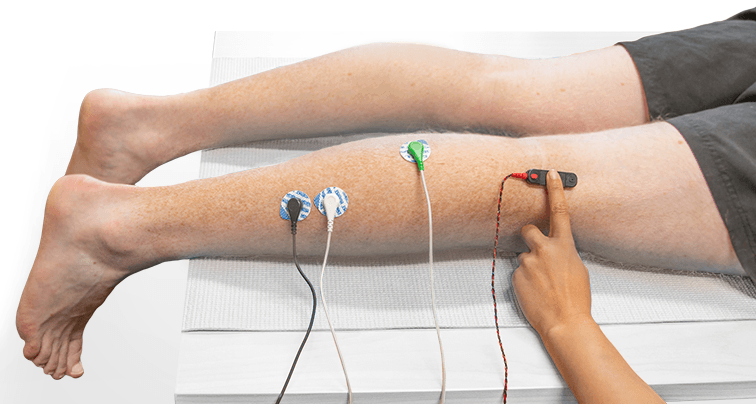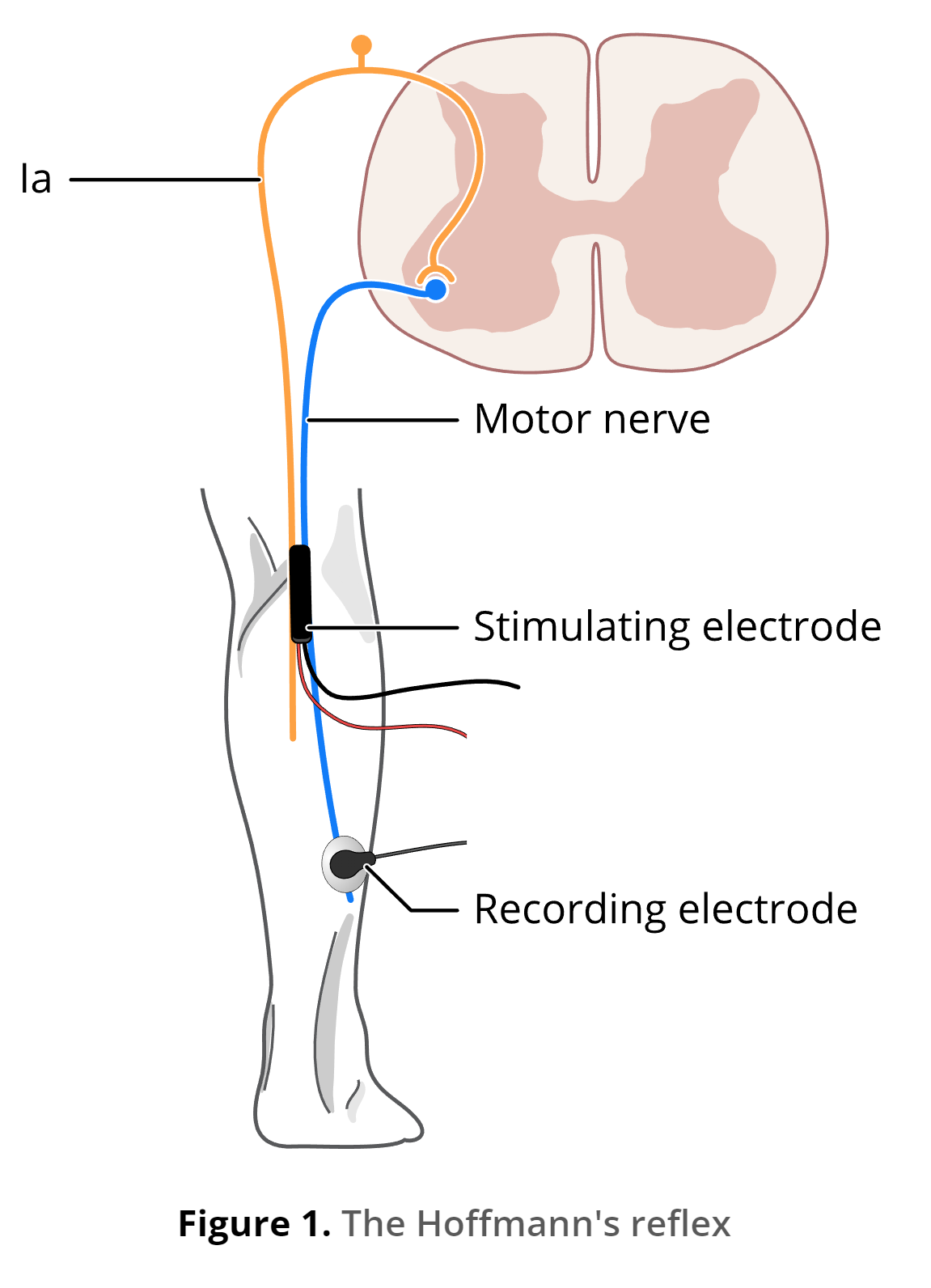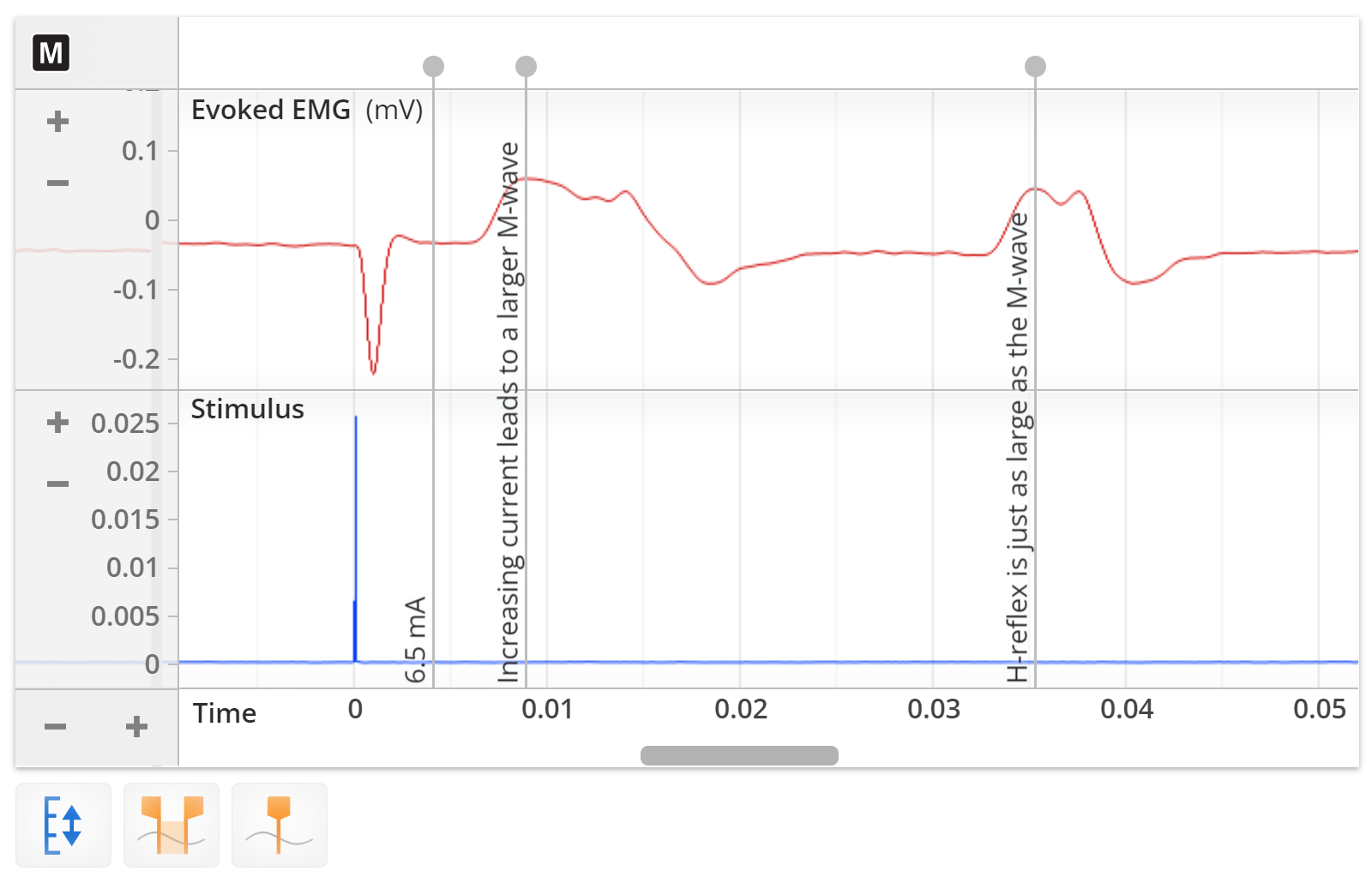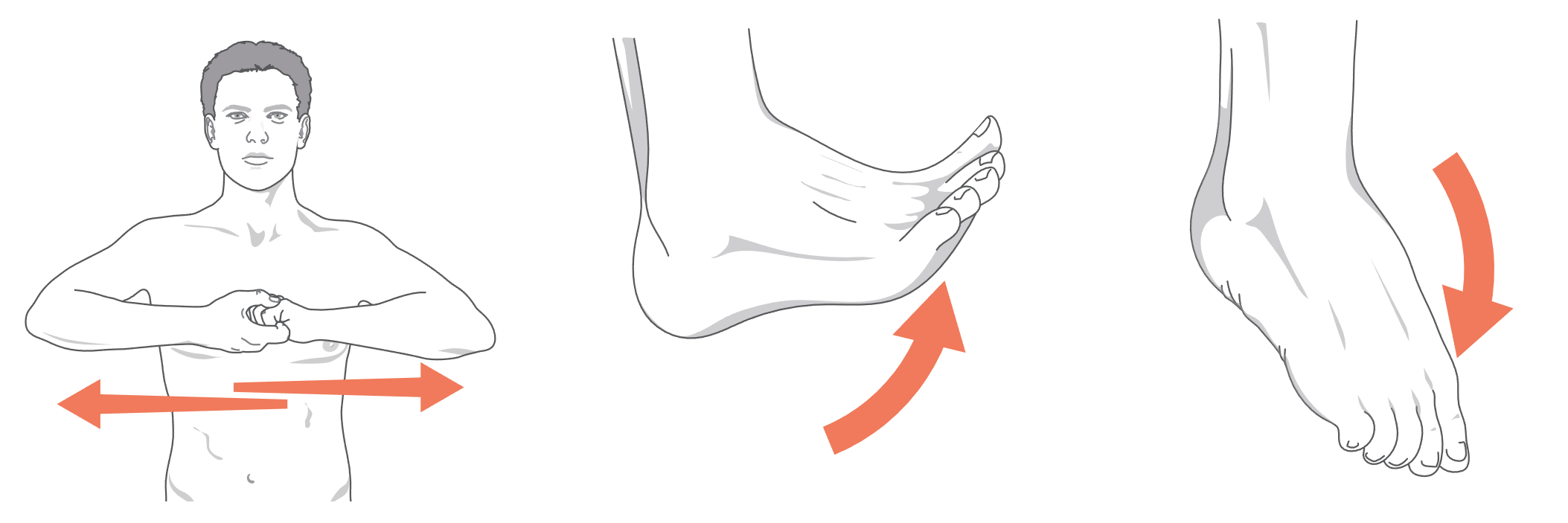The Hoffmann’s Reflex Lab is one of our newest physiology labs.
Since the Hoffmann’s reflex is complex and can be hard to find, this lab is aimed at higher-level undergraduate students who are already familiar with some physiology concepts, instead of first- or second-year students.
Students evoke the Hoffmann’s reflex (H-reflex) and muscle response (M-wave) in a volunteer, then examine how the strength of the H-reflex changes if the volunteer tenses their muscles by doing three maneuvers and movements.
This lab is part of the 100+ lessons and labs that make up the Lt Human Physiology Collection, a comprehensive teaching solution suitable for both in-person and remote learning.
Take a quick tour through the Hoffmann's Reflex lab activities in the video below, and find out what you and your students can expect from this exciting new lab and pre-lab prep!
What is the Hoffmann’s reflex?
The Hoffmann’s reflex is a monosynaptic reflex, and represents a reliable way to assess lower motor neuron function. Direct electrical stimulation of the tibial nerve causes the soleus muscle to twitch twice. When the nerve is stimulated, compound action potentials (CAPs) are produced, traveling in two directions through the motor fibers – "down" to the muscle and "up" the motor nerve toward the spine.
The signal moving “down” to the muscle bypasses the muscle spindle and causes the first muscle twitch (the M-wave). The signal “up” the motor nerve travels to the spinal cord and back to cause the second muscle twitch (the H-reflex).
Why is the Hoffmann’s reflex tricky to record?
Everyone has a slightly different anatomy. The amount of skin, muscle, and fat that covers the nerve, in addition to slight variations in the nerve's position, mean that the “sweet spot” for sampling is different for each person.

The recommended equipment placement to help students get the best results.
With that in mind, this lesson contains lots of tips on techniques to get a good recording. The lesson also discusses this variability between volunteers and details the reasons the reflex can be hard to find.
Introducing the ready-made Hoffmann's Reflex Lab
Overview of nerves and the reflex
The lab begins with an overview of the physiological mechanisms that cause the Hoffmann’s reflex and a review of the function of afferent and efferent motor nerves.
Students then answer questions crafted to test their knowledge of the different parts of the reflex arc and the relevant structures involved before they move on to the hands-on experiments.
Generating M-waves and H-reflexes under different conditions
Students then use the PowerLab to conduct their own experiments and collect real-life physiological data.
Example data from multiple subjects are provided if needed; some of these data show the ideal, expected results, while some data show more messy results.

Relevant structures and equipment are illustrated to help students understand how the reflex is generated.

Example data highlight how the signals change with current strength, so students know what to look for in their data.
The second experiment examines how the reflex changes if the volunteer is performing one of three maneuvers or movements. The volunteer will either perform the Jendrassik maneuver, or plantarflex or dorsiflex their foot.

Students will perform these three movements to see how they affect the Hoffmann’s reflex.
Since the muscles that are involved in the reflex are not in their resting positions when these actions are performed, students will determine how the contracted muscles affect the strength of the reflex. As with the first experiment, some example data show ideal results while other data are more messy.
Review and integration
The review and integration page contains questions designed to apply what students have learned in the lab. Students engage with a real-life scenario by examining a dataset modeled after the results of the reflex performed in space on the International Space Station.
A reflective question at the end of the page encourages students’ curiosity about the Hoffmann’s reflex and builds metacognition.
Related: Talking Teaching: How to encourage metacognition »
Extension
Finally, the optional extension allows students to design their own experiment that builds on the concepts in the lab.
Students can choose between investigating:
- whether an H-reflex can be evoked by stimulating the ulnar nerve,
- how the ideal stimulating bar electrode location varies among volunteers,
- how a maneuver or movement affects the threshold and maximal currents of the H-reflex, or
- a question of their own creation.
The Hoffmann’s Reflex Lab introduces students to a complex reflex in an approachable way. In addition to this lab, the Pre-lab Prep lesson assesses student’s knowledge, then walks them through the experimental setup and the data they will collect to prepare them for the lab. These two lessons are a great addition to a general physiology course.
How can I access the Lab?
For those already using Lt, you can import the Hoffmann's Reflex Lab as part of the Lt Human Physiology Collection.
New to Lt? No worries! For those wanting to experience Lt immediately, you can sign up for our free trial!
Additional resources:
New for physiology educators: Take a look inside our Endocrine Physiology Lab… »
Teach them a lesson they'll never forget! The Muscle Twitch Response experiment »
